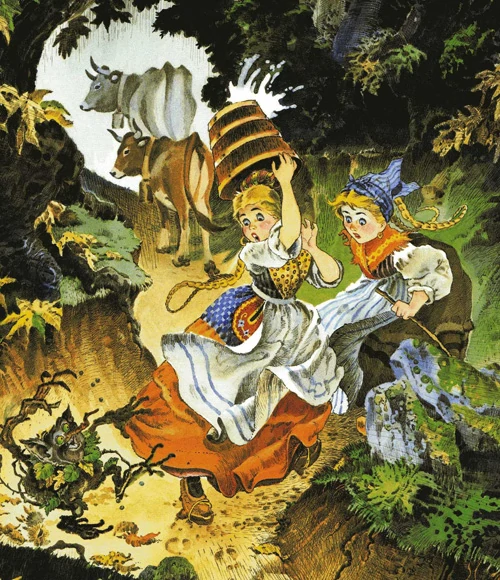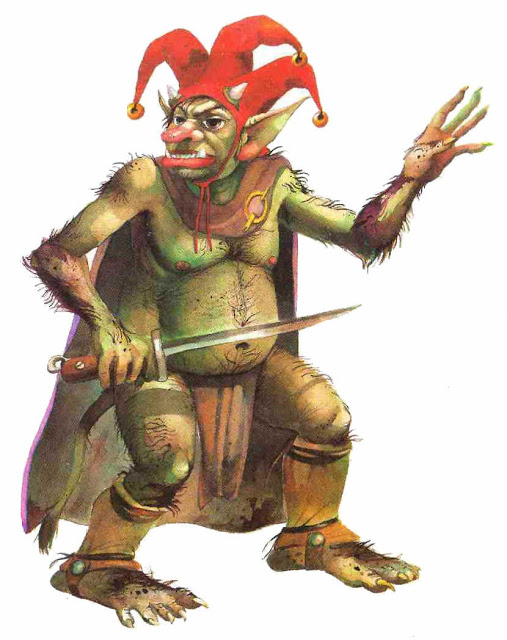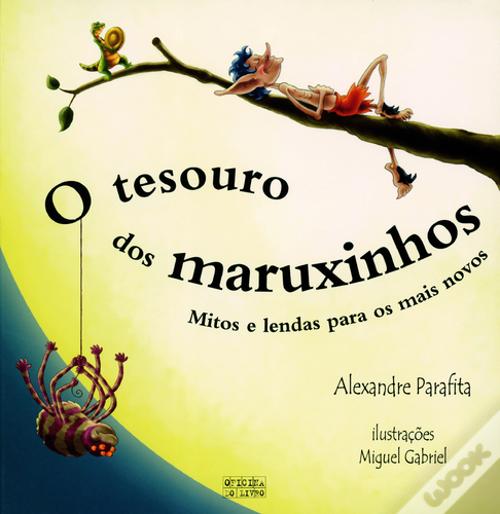[I’d like to thank u/AdrenIsTheDarkLord for the excellent suggestion for today’s article. Thanks, man!]
Ok people, hold on to your seats, because today things will get interesting. Up to now I’ve been talking about myths and legends of specific regions in the Iberian Peninsula, but today I’ll introduce you all to our first true “Pan-Iberian” Myth: The duendes.
Before anything else, by the way, you guys will have to understand that I’ll use “duendes” here as an umbrella term for a crapload of different creatures in Iberospheric countries’ folklores all over the globe, from Brazil to Phillipines, and not for only one single being, alright?
The Duendes
In a nutshell, the duende is a human-like small-sized creature, usually not taller than a regular human baby, who is quite famous for having incredible magical powers and a peculiar sense of humor. There are some similarities here with other folkloric creatures from a lot of cultures in Europe, like goblins, gnomes, pixies and leprechauns, and even with myths from other parts of the world, like the Mayan Alux, but as I told you before, “duende” here is only an umbrella term, and depending on the region, those bad boys will come in very different flavors.
In some tales they are just silly beings wanting to have fun, while in others they are just indifferent to the rest of the world, and in some others, their behavior resembles more of an imp: mischievous, harmful and sometimes even murderous. As a matter of fact, there are just too many of them, with just too many different characteristics, for me to simply squeeze them in such a small article, so today I will briefly talk about three of them: Two from Spain and one from Portugal.
[My next post will be dedicated to three more duendes, but this time from the New World (albeit heavily inspired by their Old World counterparts), so stay tuned!]
Shall we, then?
Trenti
Trenti is the name of this rather annoying but not mean duende from the Cantabrian Mythology. They’re very hard to find because they live deep into the woods, wearing leaves, roots and moss as clothing, camouflaged like a frickin’ Navy Seal. It has this bad habit of pranking people constantly, and their favorite one is pulling women’s skirts up and pinch their calves, then running away to hide in the forest.

Alright, they are ideed annoying pranksters, but they also help people in need, specially children and the elderly (quite the boy scout, huh?), and if you want to please a Trenti, just feed them plums or maize, they love them! But you shall never, under any circumstance, give them water to drink, since it’s poisonous to them. Think of chocolate to dogs here.
Tardo
The tardo is another duende from Spain, belonging to the Galician Mythology. At first glance, one may not find it too much of a menace, after all it is just a small, greenish, round-black-eyed creature wearing old clothes and a red cap, but upon a closer look, it’s possible to notice an impressive set of sharp teeth in its mouth, a small blade in its hand, and a not-so-cool tendency to make people’s lives miserable.

The Tardo lives under the ground, and when the night comes, they like to make people suffer by sitting over their chest while they sleep, causing horrible nightmares (à lá Pesanta). They also love making people getting disoriented during a journey. Fortunately for us, it’s quite easy to protect ourselves against this devilish creature: Get a bunch of grains, put it in a bowl, leave it alone. That’s it! A Tardo can’t help but trying to count things, even though it only know how to count to 100, so let’s just say they will spend a lot of time trying to count a bowlful of grains.
Maruxinho
The Maruxinho is a duende from the Portuguese Mythology, more specific from the region of Concelho de Chaves, that lives in old pre-roman castle-like structures called “Castros” or in small dark caves and tunnels under villages. They usually mind their businesses, and will not try to prank or make you suffer in any way.

They are very small, as every good duende, and have a wrinkled face. Their eyes are bright and full of life, their ears are large and instead of hands, Maruxinhos got a pair of claws. People usually consider them smart creatures, that can easily hide in any circumstance, being able to fit in almost any place, which is quite the handy skill when you are not a fan of being seen.
fun fact: The name duende comes from the expression “duen de la casa” or “dueño de la casa“, which means “house owner”, or “house possessor” in Spanish. Another possible origin is the expression “duar de la casa”, meaning “house inhabitant”, with the word duar coming from Arabic.


